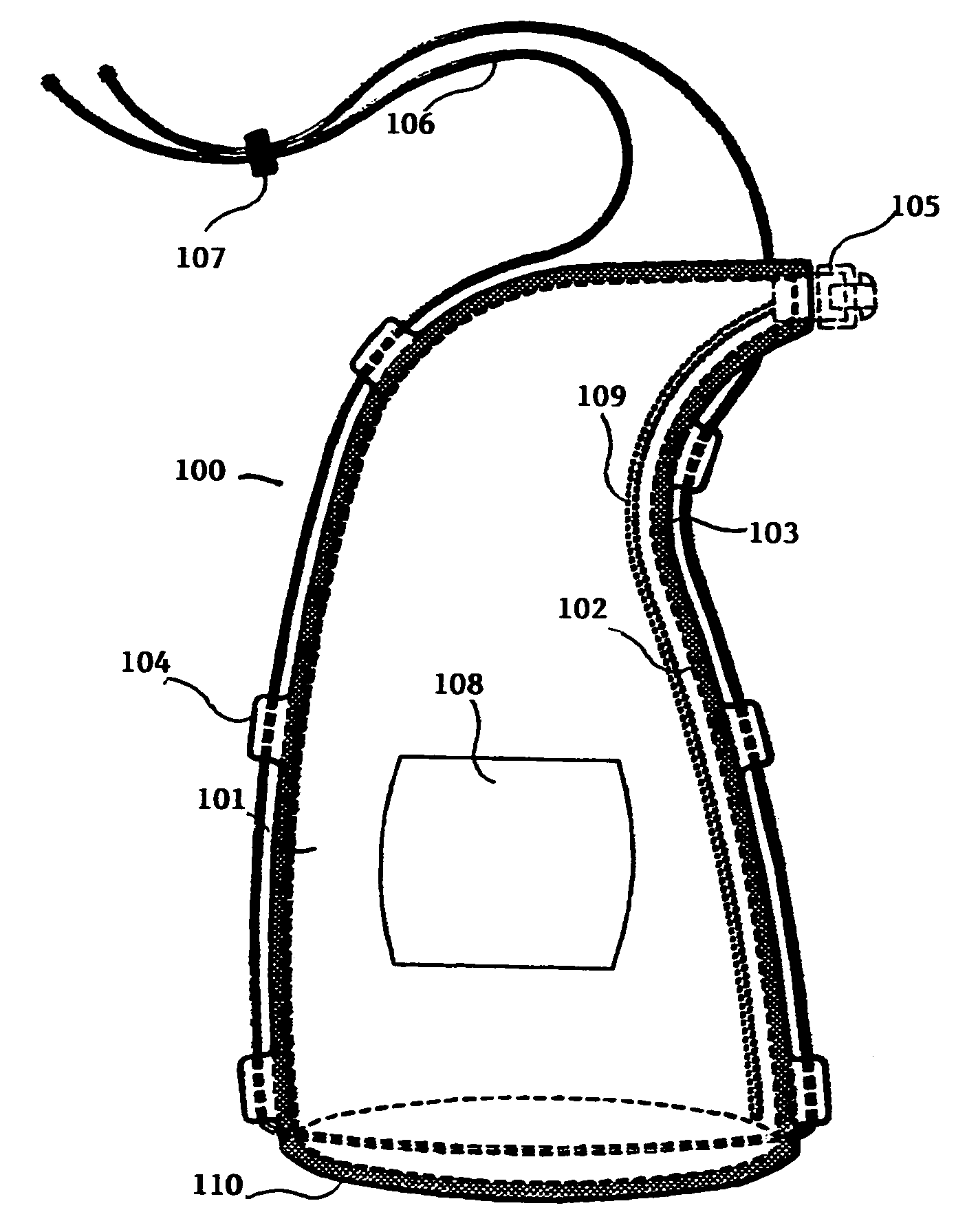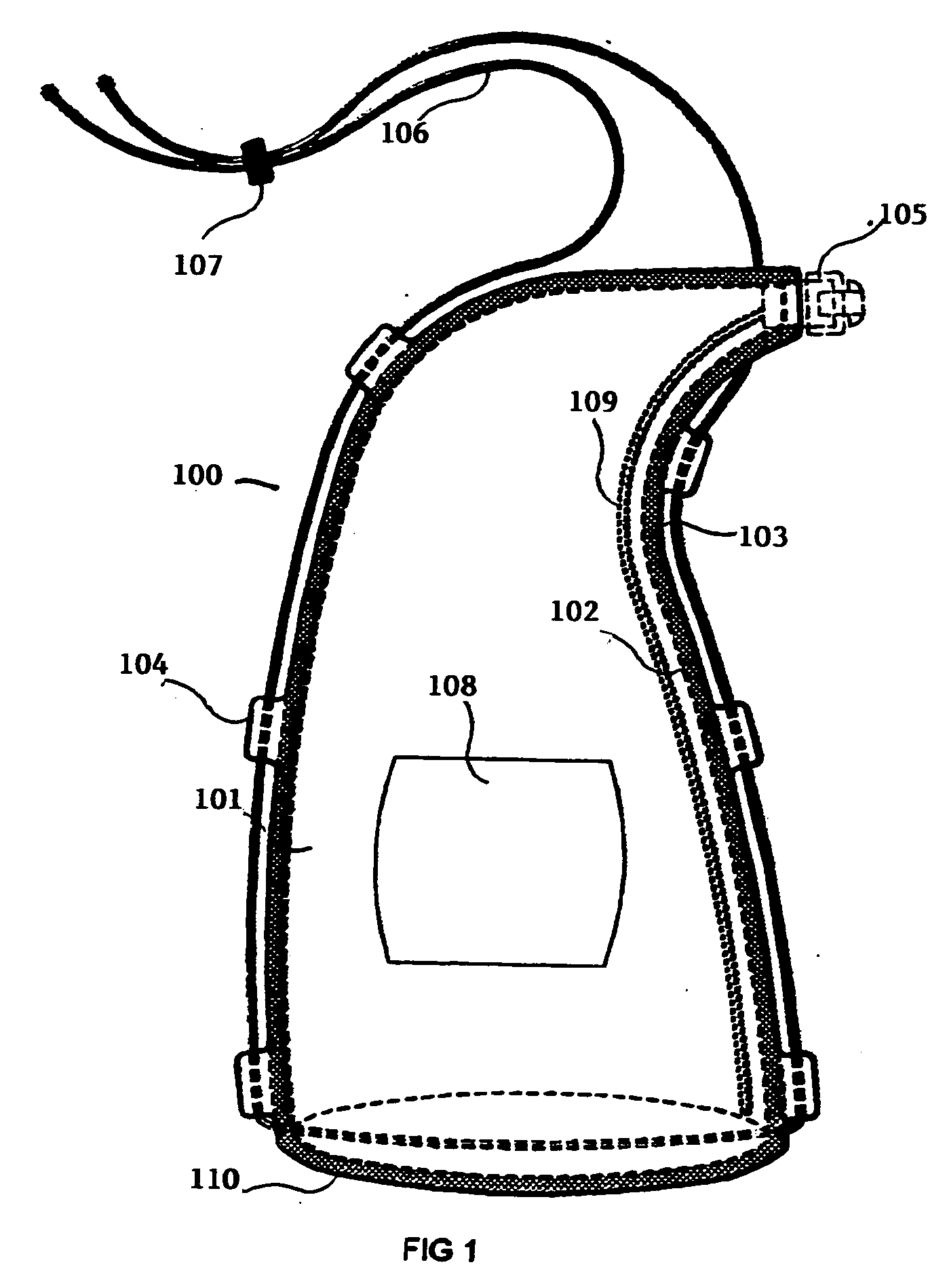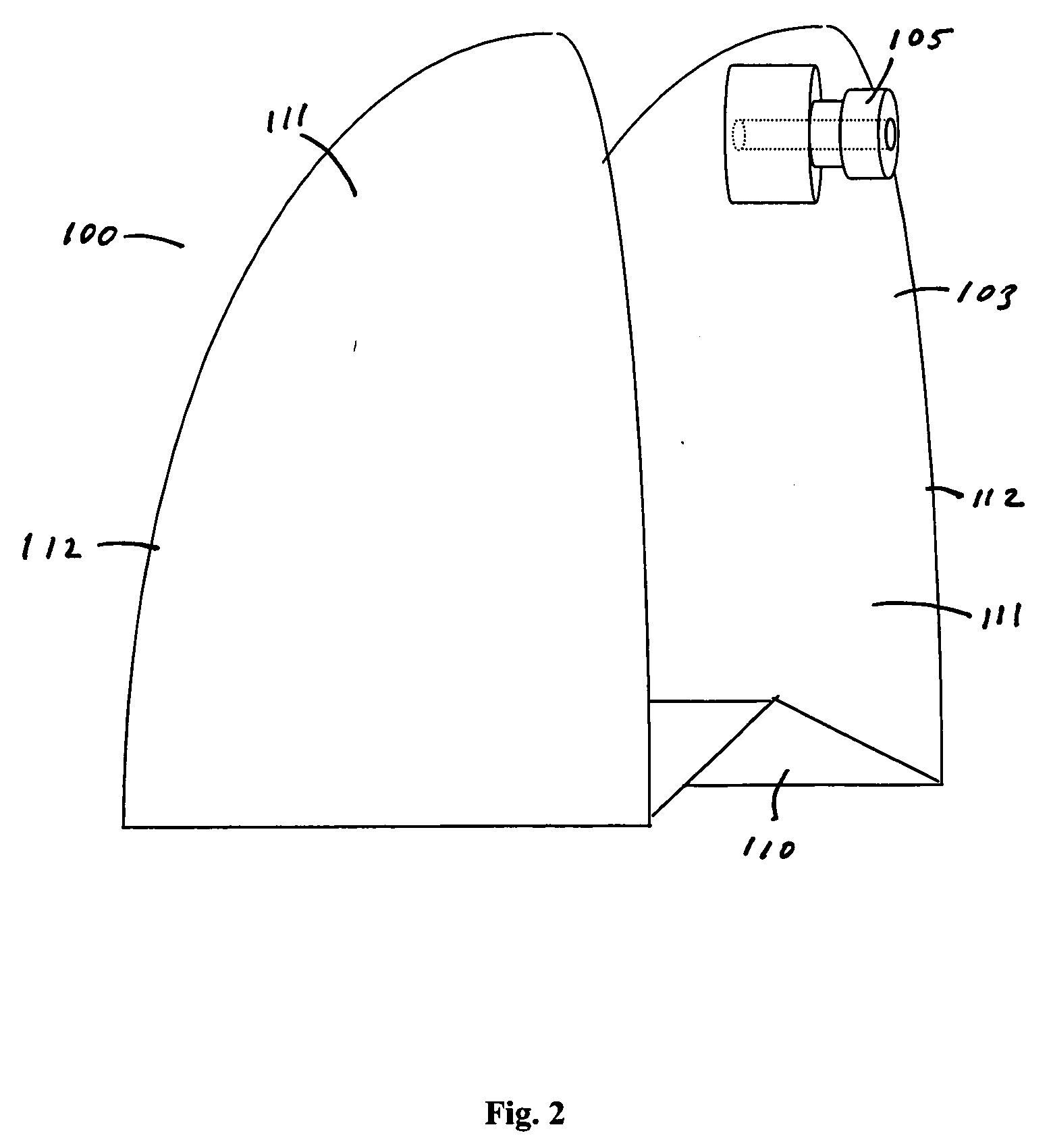Portable beverage container
a beverage container and portability technology, applied in the field of beverage containers, can solve the problems of leaking beverage, boda bags also not having good insulative properties, and not being able to be mass produced as pre-packaged beverage containers, and achieve the effect of extending the shelf life of wines stored in inventive containers and optimizing the packaging of mass quantities
- Summary
- Abstract
- Description
- Claims
- Application Information
AI Technical Summary
Benefits of technology
Problems solved by technology
Method used
Image
Examples
Embodiment Construction
[0021] The preferred embodiment of the inventive beverage container is described with reference to FIG. 1. The container 100 has a main body 101 that is roughly cylindrical cross section and a flat base 110 which allows the beverage container 100 to stand upright on a flat surface. The top of the body 101 is tapered and may be angled to one side. A re-sealable cap fitment 105 is attached to the top of the body 101. The laminated film 103 is flexible and may include an oxygen barrier material that prevents the transmission of oxygen to keeps the beverage fresh for longer periods of time than prior art containers. The film 103 may also include an inner layer 102 that is chemically compatible (inert) with the beverage and an insulative layer that minimizes convection heat transfer and keeps the beverage cool when exposed to warm climates.
[0022] The top of the container 100 may be bent to one side so that the cap 105 may be angled to almost horizontal to improve the functionality of th...
PUM
| Property | Measurement | Unit |
|---|---|---|
| thick | aaaaa | aaaaa |
| thick | aaaaa | aaaaa |
| thick | aaaaa | aaaaa |
Abstract
Description
Claims
Application Information
 Login to View More
Login to View More - R&D
- Intellectual Property
- Life Sciences
- Materials
- Tech Scout
- Unparalleled Data Quality
- Higher Quality Content
- 60% Fewer Hallucinations
Browse by: Latest US Patents, China's latest patents, Technical Efficacy Thesaurus, Application Domain, Technology Topic, Popular Technical Reports.
© 2025 PatSnap. All rights reserved.Legal|Privacy policy|Modern Slavery Act Transparency Statement|Sitemap|About US| Contact US: help@patsnap.com



